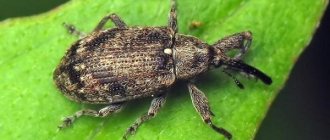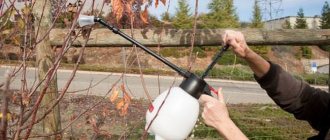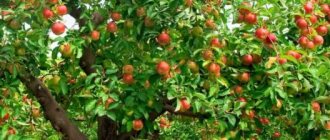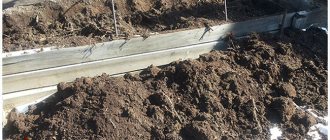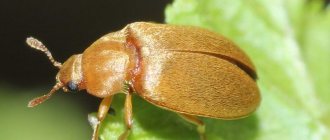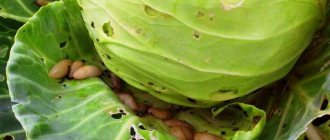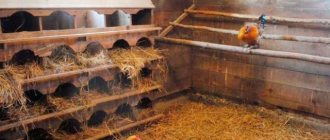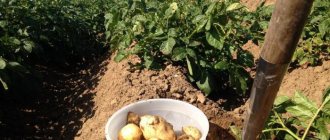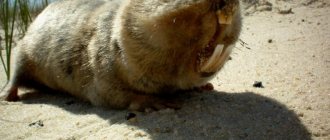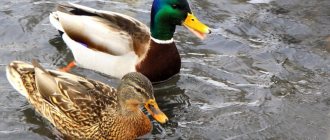Small, unattractive fruits covered with dark spots – gardeners often have to deal with such results if their apple tree is infected with scab.
This disease completely negates the possibility of getting a good harvest of strong bulk apples.
Scab does not pose a serious threat to the health of apple trees.
But if you do not fight the disease, the yield of the apple tree will decrease every year, and fruiting may stop altogether.
Timely treatments of the orchard will help prevent the appearance of scab and cure already infected trees.
Description of scab on apple trees
Literally everyone can determine the presence of scab on trees: spots (on leaves, fruits) immediately catch the eye, which at the very beginning of their development have a yellow-green color, and later turn black and often crack. The causative agent of apple scab is a marsupial-type fungus, namely Venturia inaequalis. This fungus usually affects leaf blades, as well as ovaries and, of course, fruits. The fungus is most active in wet years and periods of the season, when there are heavy rains, fogs, or damp weather for a long period.
Latest articles about gardening
Eucharis leaves turn yellow and die
Cineraria: planting and care in open ground
How to treat grapes in the fall before covering
Usually, the scab fungus gets on the bark and shoots of trees in early spring; with the help of the mucous membrane, it literally clings to the shoots and immediately begins to develop, sometimes quite actively.
The first noticeable signs of the appearance of fungus can usually be observed during the flowering period of the apple tree, which often occurs in the month of May. Often this period is characterized by heavy rainfall combined with warmth, which is exactly to the advantage of the fungus. Spores of the scab fungus spread quite actively with water, wind, animals and humans, and if they land on leaf blades, they begin to develop very rapidly, literally penetrating quite deeply into the leaf tissue. The vital activity of the fungus first leads to the appearance of spots on the leaf blades, and then simply through, round holes.
Scab: features of the disease
Scab is a disease caused by the fungus Venturia inaequalis, the spores of which are found everywhere. They are found in foliage near trees, in bark cracks, and in the ground. Favorable conditions for appearance:
- rainy weather;
- fogs;
- dense planting of fruit trees on the site.
With strong immunity of the apple tree, the disease causes local trouble and has virtually no effect on yield. But under suitable conditions, scab develops quickly, affecting leaves, bark, branches and fruits. The most vulnerable are young apple trees, as well as old trees with a weakened immune system.
Numerous gray-yellow spots appear on the foliage, quickly increasing in size. Then the leaves dry out and fall off the branches, which affects the tree’s nutrition and fruit set. Spots also appear on the ovaries, and then on the apples, then they harden and become covered with cracks. Almost the entire surface of the apples darkens, the fruits stop growing, wrinkle, and taste bitter. Apples infected with the fungus are smaller in size and, although not toxic, are unattractive in appearance.
The harmful fungus is dangerous for all varieties of apple trees, but there are varieties that are more resistant to damage. Gardeners in all regions are fighting scab, carrying out mandatory prevention, and also trying to detect the infection in the early stages.
Treatment of scab on apples
Currently, specialized stores offer dozens of different products designed to combat scab. The most popular means are:
Gamair (an analogue of Fitosporin) is available in tablets and is easy to use. In the fall, when processing apple trees, you need to dissolve ten Gamaira tablets in ten liters of water, and then spray the tree. It is recommended to perform 3 such treatments with a break of 10-15 days. Depending on the size of the crown, one tree will require from two to three liters of the prepared product.
Bordeaux mixture is a product that has been proven over the years, is effective and has an affordable price. When using this fungicide, remember that the agrochemical should be applied generously to the foliage and branches of the tree. After this treatment, the apple tree will receive a characteristic blue color. To prepare the solution, you will need to dilute 400 grams of lime and 400 grams of copper sulfate in ten liters of water. To treat one tree, 5-6 liters of solution will be enough. The first treatment is carried out after harvesting. Additionally, after 2-3 weeks it is recommended to perform another spraying.
Latest articles about gardening
Mole rat in the country: how to get rid of it?
Technology for growing cucumbers in a greenhouse
Chokeberry: planting and care
Rayok is an effective fungicide that maintains its effect for three weeks, quickly suppressing foci of the disease and destroying the fungal causative agent of scab. It is recommended to perform 4 treatments per season, two of which are carried out after harvesting in the fall. You need to dissolve 2 milliliters of rajka from the ampoule in a bucket of water. This solution will be enough to treat four apple trees.
Features of the fight against scab
Unfortunately, the fight against apple scab for many gardeners is not limited to the fall. And they wage a real war against infections all season long. In the spring, apple trees are treated before the appearance of young leaves, in the summer - immediately after flowering and only with safe preparations.
Usually, in hot weather, the scab pathogen stops acting and the disease recedes. But during prolonged rains, the infection flares up with renewed vigor, and it is important not to miss this moment. It is recommended to monitor weather reports and be alert.
Processing plantings in August is allowed only in the evening or early in the morning. In hot weather, any drugs cause a burn on the leaves and bark. Chemical preparations are not used in summer, since the decay period of the elements is long, up to a month, and the fruits from such trees cannot be eaten.
In the fall, when the apples ripen, only folk remedies are used. If trees are severely affected by scab, the infection is difficult to treat, and nothing can be changed. They wait until the harvest is harvested, and only then carry out all the necessary treatments.
Depending on the apple variety
Almost all varieties are affected by scab, but there are those that are less resistant. If Golden Chinese or Melba grow in the garden, then the risk of infection increases.
Recommended for the following varieties:
- highlight well-lit areas in the garden;
- treat with anti-scab preparations several times a season, always alternating the formulations;
- treat apple trees with special immunostimulants that increase the tree’s resistance to harmful spores.
Breeders have developed many varieties that are resistant to the disease. It is advisable to select the most suitable apple trees for the garden, adapted to the region.
By region
The timing of autumn treatments depends on the regions. Apple trees are affected by scab in the south, in the middle zone, in Siberia, and in the Urals. Therefore, when spraying, take into account the weather, since many drugs stop working when the temperature drops.
In the middle zone, gardens are cultivated in October, in the Urals - in September, in the south - October and November.
Treating apple trees for scab with iron sulfate
The active element of this vitriol is ferrous sulfate, up to 53%. It is a green-bluish crystalline powder.
The use of iron sulfate allows you to restore old trees and improve fruiting of apple trees. This is also a very inexpensive but effective remedy. Treating trees with it in early spring will free the tree from lichen and mosses.
The concentration of the solution should be 5-7%. If the solution is used in the fight against apple borer, then use a 3% solution.
Iron sulfate is an excellent insecticidal and fungicidal agent. For individual plants, in particular for apple trees, it is also an indispensable fertilizer. Microelements of iron are contained in the vitriol solution in a form that is easily accessible to the plant. Lack of iron causes a lack of oxidative enzymes in the plant and leads to the following diseases:
- leaf chlorosis;
- slow growth of new shoots;
- insufficient development of fruits.
Venturia inaequalis or Venturia unequal
The infestation of apple trees with scab is the result of the work of the marsupial fungus Venturia inaequalis (Venturia unequal).
Parasitizing the vegetative mass of an apple tree, the fungal infection attacks leaves, shoots, flower buds and fruits. The active reproduction stage begins in early spring, when the spores of the fungus awaken and infect the young leaves of the apple tree.
As the fungus develops, it spreads throughout the plant, and rain and wind help it move to neighboring fruit trees.
overwinters on fallen leaves, bark and unripe fruits. Under comfortable climatic conditions, the marsupial fungus can successfully survive the winter in the soil.
Result of infection.
Causes of infection
To successfully fight scab, you need to understand what conditions create a comfortable environment for the development of the parasitic fungus.
- A favorable factor for the development of infection is high humidity , at which spores actively grow;
- The ideal temperature for the development of the fungus is in the range from 18 to 20 degrees Celsius;
- Poor ventilation of the crown and its excessive density are optimal conditions for complete destruction of the apple tree;
- Condensed plantings increase the risk of rapid spread of infection from one tree to another.
Apple trees are most vulnerable to scab infection in the second half of May, when flowering begins.
Excessive crown density.
Signs of the disease
You can find out whether an apple tree is infected with scab by the characteristic signs of the disease :
- Light green spots on the leaves, oily initially, brown velvety as they develop;
- Dark spots appear on the apples , and at the final stage they crack;
- The bumps on the bark crack towards the end of the season, releasing new fungal spores.
Scab is dangerous because it can form a fruitful symbiosis with other pathogenic fungi.
The apple tree is affected by a whole range of diseases. ATTENTION! Along with scab, powdery mildew and Alternaria can develop on the apple tree.
Signs of scab.
Consequences
Apple trees will not die from infection with marsupial fungus.
Moreover, the longer the apple tree lives, the better for the parasite, because the development of the tree contributes to its vital activity and spread.
The tree's body suffers and weakens:
- Scab, absorbing leaves, causes them to die, making it difficult for the plant to breathe and absorb nutrients;
- Severe infection can lead to premature leaf fall, the apple tree will not be able to properly prepare for wintering;
- Shoots that have wounds and cracks from scab do not bear fruit the next season;
- With severe damage, when flower buds and ovaries are infected, the apple tree does not produce a harvest;
- The taste qualities of apples deteriorate, and their presentation does not allow for their successful sale;
- Infected fruits cannot be stored for a long time, which is especially true for winter varieties of apple trees.
Timely therapeutic and preventive treatment of apple tree scab will improve the health of the orchard and reap a rich harvest.
Treating apple trees for scab with copper sulfate in the fall
The use of this fungicide has been practiced by gardeners for a long time, so its effectiveness has been proven many times. With its help, scab, nonillion, curly hair, phyllosticosis and other diseases are prevented and treated. However, copper sulfate has one significant drawback - it is highly acidic. This feature can be softened by the addition of some alkaline component. To spray apple trees, various solutions based on copper sulfate are prepared.
Subsequent spraying is carried out with a more gentle solution, for the preparation of which you will need 100 g of vitriol and 150 g of lime.
Burgundy blend. To prepare it, copper sulfate and soda ash are mixed in equal quantities. Then 100-150 g of this composition is dissolved in a bucket of water. Burgundy mixture is less effective than Bordeaux mixture, but its advantage is that it does not leave a film on the leaves.
Mixture with laundry soap. Sometimes, for spraying apple trees, a solution is prepared from 20 g of copper sulfate, 150 g of laundry soap and 10 liters of water. Such a remedy is least likely to burn the plant, but it does not always give the expected result.
Modern chemicals
The modern market offers gardeners a wide selection of means to combat scab . Preparations for apple scab differ in the active substance, the nature and duration of exposure and the level of toxicity.
Timing and purposes of spraying fruit trees.
Copper-containing drugs
IMPORTANT! All products whose main active ingredient is copper are quite toxic .
Working with them is dangerous if you do not use protective equipment. Since copper tends to accumulate, you should strictly follow the manufacturer’s recommendations regarding the dosage of preparations, the amount of working solution per tree treated, the maximum number of treatments and the interval between them.
Blue spray
Despite the variety of new means for combating scab, the leading position among gardeners in choosing what to spray apple trees against scab is still occupied by Bordeaux mixture .
The treatment of apple trees with a solution of rich blue color is popularly called “blue spraying”.
The composition of Bordeaux mixture, developed for the treatment of vineyards in French Bordeaux, consists of calcium oxide and copper sulfate .
Sold in dry powder and liquid form. You can prepare the composition yourself by mixing solutions of copper sulfate and quicklime in the required proportions.
Bordeaux mixture for processing apple trees.
For spraying plants, a 1% and 3% solution is most often used:
- In the first case, you will need 100g of vitriol and 150g of lime per bucket of water.
- In the second, 300g of vitriol and 400g of lime per bucket of water.
When preparing the solution, it must be taken into account that the components are first diluted in water separately, and only then mixed. The copper component must be dissolved in hot water and avoid contact with iron - the dishes can be glass or enameled.
A 3% solution is used only before the growing season of apple trees.
There can be several treatments with a 1% solution.
The most common scheme if there are signs of scab damage to an apple tree:
- Treatment with a 3% solution in early spring before the start of the growing season;
- Treatment with a 1% solution as soon as the buds open;
- Treatment with a 1% solution after picking the fruits.
Bordeaux mixture has a contact type of action - it only works when it comes into contact with the affected area, so it is important to spray thoroughly.
The action of the Bordeaux mixture is long-lasting, lasting 30 days , while rain does not affect the protective characteristics of the composition.
This composition is used by gardeners to treat not only apple trees, but a large number of plants.
You shouldn't get carried away with them. Some gardeners allow 7-8 treatments per season. It is not safe. Thoughtless, frequent use of Bordeaux mixture on the site can lead to unpleasant consequences.
The components of the mixture tend to accumulate in the soil over the years, polluting nearby wells and reservoirs, moving through groundwater.
An excess of copper will create the opposite effect on plants - the ovaries may be shed and summer leaves will fall . As a result, there will be no harvest and the tree will not be prepared for winter.
Drug Hom
The active ingredient of the drug Hom is copper oxychloride. The product is actively used as a substitute for Bordeaux mixture .
In terms of effectiveness in combating scab, the drugs are almost identical. Bordeaux mixture has an advantage over Hom - trees treated with it additionally receive calcium, which is often lacking in the soil.
The drug "Hom".
Khom is produced in the form of a water-soluble powder, in bags of 20 and 40 grams. When preparing a working solution, you should dissolve 40 g of powder in a small amount of water, then bring the total volume of liquid to 10 liters. The solution must be used immediately after preparation.
The fungicide is contact, does not penetrate plant tissue, has no systemic effect, and is easily washed off by rain.
The maximum number of treatments is 6.
The interval between treatments is 2 weeks.
Spraying is not recommended during flowering.
Drug Abiga-pik
Abiga-pik is an analogue of the drug Khom, which is copper oxychloride in an aqueous suspension.
A substance has been added to it - adhesive , which allows the fungicide to adhere well to the surface of the plant. Preparing a solution from a suspension provides a better binding of the drug with water, which makes spraying more uniform.
The drug "Abiga-Peak".
To prepare the working solution, one bottle (50g) is diluted in a bucket of water. The fungicide does not penetrate the plant body and belongs to the group of contact agents. Not phytotoxic.
The drug can only be used in dry weather; after drying, it easily withstands rain and does not wash off.
Advice! It is especially recommended for the first seasonal treatment of apple trees, before buds open.
It is quite effective and relatively safe , therefore it is recommended not only for infected apple trees, but for the prevention of scab.
The maximum number of treatments is 4.
Drug Oxychom
A combination of two substances, in which the oxadixyl component is added to the main active ingredient, copper chloride.
The latter is responsible for long-term systemic plant protection. Therefore, Oxychom is a contact agent with a prolonged action .
The drug "Oxychom".
Copper destroys the spores of the marsupial fungus, falling on the affected areas of the apple tree.
The protection lasts for three days , then oxadicil comes into play, killing the infection in those areas that were not treated.
The second phase increases the plant protection period to two weeks.
The fungicide is available in the form of water-soluble granules. Before use, a package (20g) of Oxychoma is diluted in a bucket of water.
The effectiveness of the drug is very high, and there is also high toxicity. The product should not be used in rainy weather or a day before rain. The interval between treatments is 2 weeks.
Kuprikol
The active substance is copper oxychloride .
Contact drug. Due to the fact that copper is used in Cupricol in the form of a colloidal solution, the consumption rate of the drug is several times lower than that of analogues.
The drug is resistant to precipitation.
The working solution can be stored longer : the active substance does not separate and does not precipitate.
Three treatments are enough to destroy scab..
Cuprostat
A two-component preparation of copper acetate and ammonia solution.
In addition to the protective effect of treating apple trees for scab, it acts as a mineral nitrogen supplement .
The use of the drug is recommended in the spring to destroy fungal spores that have survived the winter. Therefore, this is a good solution when you are looking for how to treat apple trees against scab in the spring.
Autumn spraying acts as a preventative, root watering acts as a fertilizer for the root system, while simultaneously killing fungal infections in the soil
Tsikhom
A two-component drug consisting of copper oxychloride and zineb .
Available in the form of a soluble powder.
Copper atrophies the respiratory function of spores and blocks their development . Zineb acts selectively, disrupting the metabolism in fungal cells.
The drug is not phytotoxic; it penetrates into the fungal culture and not into the plant body.
- The first spraying is recommended at the beginning of the growing season before buds open.
- subsequent treatments are carried out at intervals of 10 days.
The drug "Cychom".
Sulfur-based preparations
The principle of action of sulfur-based fungicides is the active release of gases.
Important! Colloidal sulfur cannot be treated when the air temperature exceeds 25 degrees.
At high temperatures , the release of gases is too intense, which leads to the formation of a sulfur cloud around the apple tree, destroying not only scab, but also insects, birds and small rodents.
Colloidal sulfur solution
A popular means for spraying apple trees against scab is a solution of colloidal (ground to dust) sulfur . Treatment with colloidal sulfur is possible only in dry, clear weather - high air humidity reduces the treatment result to almost zero.
- To treat apple trees against scab, 40 g of the drug is diluted in 5 liters of water .
- Consumption per apple tree – 10 liters.
- The maximum possible number of treatments is 5.
- The interval between treatments is 2 weeks.
The drug does not penetrate plant tissue, therefore it is safe for them, does not accumulate in the soil, and quickly decomposes .
IMPORTANT! You cannot treat apple trees with sulfur during the flowering period - this can lead to the ovaries falling off.
Cumulus
The term "cumulus" is a synonym for the word "sulphur" . The Cumulus trademark is essentially the same colloidal sulfur, only it has a registered name.
Thiovit-jet
A sulfur-based preparation in the form of water-soluble granules. Unlike colloidal sulfur, the drug quickly dissolves in water, turning into a suspension. The action is based on the release of sulfur vapors.
It is necessary to evenly cover the apple tree with the working solution. To spray apple trees against scab, you need to dilute 40-80 g of granules in a bucket of water.
Up to 6 treatments per season are allowed . The drug is not phytotoxic and decomposes quickly.
The drug "Tiovit-jet".
Treating apple trees against scab with urea
You can spray the apple tree with urea - this helps to destroy even those pests that are in the larval state. In addition, spraying with urea also benefits the plant itself - the substance saturates the tree with nitrogen, therefore it is used as a top dressing. In the fall, apple trees are sprayed when they have shed half their leaves.
Latest articles about gardening
Indoor cacti photos and names
Clematis: preparing for winter in the Urals
Calla lilies care, cultivation, storage
Why is scab dangerous?
Scab, what is it? This is a fungal disease caused by marsupial fungi. It can infect the fruits and leaves of the plant. The disease is considered very insidious because it easily disguises itself as other diseases. It is often difficult for beginners to determine what disease has affected apple trees. And this can lead to an outbreak of the disease, which will cause great harm to the entire garden.
Scab is most often found in temperate climates and in areas that experience cold, wet springs. If the summer is rainy, the disease can affect the entire garden. The disease reduces yield and fruit performance. Infected apples lose their vitamin value, are poorly stored, and look unattractive. Apple trees rarely die directly from scab; the disease simply reduces their winter hardiness, and this leads to freezing.
Scab is difficult to control because the disease quickly spreads from one fruit tree to another. If scab is noticed on one tree, the entire garden needs to be treated.
Autumn feeding of apple trees against scab
When choosing fertilizers, you need to focus not only on the seasonality of work. An important role is played by the age of the apple trees, their variety and, of course, the chemical composition of the soil. How to feed an apple tree in the fall? How to correctly calculate the dosage depending on the variety and age of trees? What weather should these events be held in? You will find answers to these and many other questions in this article.
In autumn, apple trees need to be fertilized with fertilizers based on phosphorus and potassium. Nitrogen fertilizers should be abandoned in the autumn so as not to provoke the formation and growth of young shoots. They will not survive the winter and are guaranteed to freeze. And their appearance and active growth will significantly weaken your apple trees before the onset of frost and they will most likely freeze out.
Apple tree varieties resistant to disease
When choosing varieties of apple trees for planting an orchard, attention is most often paid to such an indicator as resistance to scab. More than 120 varieties have been developed that are less susceptible to this insidious infection. The selection used a special Vf gene, which increases the resistance of trees to the fungus Venturia inaequalis. When growing many new selections, the use of scab fungicides is not required.
Apple trees are recommended for the southern regions:
- fontanel;
- Fairy (fruits are used in dietary and baby food);
- Red amber;
- Juno;
- Lyubava;
- Orpheus.
In the middle zone, gardeners note such scab-resistant varieties as:
- Ranetka (performs well in harsh conditions);
- Geneva (fruits are not suitable for long-term storage);
- Venyaminovskoe.
Of the early, scab-resistant varieties for the Moscow region, they recommend:
- Arkadik;
- Apple saved;
- Elena;
- Folk.
In the list of early autumn apple trees, the leaders are held by Uslada and Sergiana, and among the later ones, Legend, Imant, Chashnikovskoe are most often planted.
The category of highly scab-resistant varieties includes:
- Orlovim;
- Imrus;
- Slav;
- Celandine;
- Pervinka.
When planting orchards, it is taken into account that during periods of epiphytotics, even apple trees with high field resistance can be affected by the pathogen. Therefore, preventive work is carried out in any situation.
How to fertilize apple trees depending on soil composition
Before applying fertilizer to apple trees in the fall, you need to pay attention to the acidity level of the soil in your area. Increased acidity or alkalinity of the soil, even with careful and timely care, immediately affects fruiting. An outwardly healthy and abundantly flowering apple tree bears fruit very sparingly.
If the acidity level exceeds the norm, then the soil needs to be deacidified. To do this, add the following to the root zone and along the perimeter of the crown:
- Chalk;
- Slaked lime (fluff);
- Wood ash;
- Dolomite flour.
Of all the above fertilizers, gardeners deservedly consider wood ash to be an ideal fertilizer. It not only perfectly normalizes the acid balance, but also enriches the soil with potassium and phosphorus.
Any of the elements you have chosen must be scattered around the apple tree and carefully dig up the top layer of soil with a pitchfork. You shouldn’t go too deep when digging, so as not to damage the roots of the tree.
If alkaline values are high, the composition of the soil can be normalized using sawdust or peat.
Latest articles about gardening
Technology for growing cucumbers in a greenhouse
Blackberry shelter for the winter. Video
Sheltering grapes for the winter in the Moscow region video
Signs of the disease, what harm it can cause to the plant
The disease is especially harmful during the spring and summer growing season in years with wet and warm weather. On an apple tree, scab looks like this: on the leaves there are spots, initially weakly expressed, slightly yellowish, as if oily, then a greenish-brown coating of sporulation of the fungus appears on them. The leaves on an infected apple tree turn yellow, dry out and, dying, fall off prematurely.
From the leaves, the infection moves further to the peduncles and stalks. Flowers and young ovaries fall off. On blighted apples, scab forms dark olive-colored spots of varying sizes. The tissues under the spots become corked, which leads to a delay in the development of fruits and their deformation, sometimes cracks appear in the affected areas. In shoots affected by scab, small swellings first appear on the bark, which then rupture and the bark begins to peel off. Other infections can penetrate through scab spots into the tissues of trees and fruits.
In sick trees, productivity and fruit quality decrease, and resistance to cold deteriorates. The infection affects the current season's growth and fruit buds, meaning next year's harvest also suffers.
Apparatus for treating apple trees against scab
Processing fruit trees in the fall is simplified thanks to existing devices of a mechanical or manual operating principle. These devices protect the gardener from contact with the preparations and spray them evenly. Regardless of the operating principle, all devices are equipped with a spray pump. The differences between mechanical devices and manual models are their ease of use. And, of course, there is a difference in their cost. Mechanical devices are more convenient, but more expensive. And to spray trees using a manual device, periodic pumping is required.
Features of processing tree trunks
To prevent the appearance of fungus or get rid of it, you need to choose how to treat apple trees in the fall against scabs and
. It is necessary to begin after the completion of harvesting work.
May be interesting: Ways to fight ants in a greenhouse. How to treat a greenhouse in the spring against pests and diseases. Wasps in the country, methods for solving the problem.
When there is not a single fungus-affected apple left on the tree, do the following:
- We remove all dried, unopened shoots.
- We use a garden knife to clean the affected areas of young branches until they reach healthy wood.
- We do the same with the trunk, confidently cutting off all the swollen and “scaly” parts of the bark.
- We clean everything with a chisel so that it turns out smooth and neat.
Preparing a solution for whitening apple trees. Mix 1 cup of slaked lime, ½ part of a bucket of clay and manure, making the composition the consistency of sour cream. If you couldn’t find the first component, replace it with 1 cup of wood ash. We add the preparations “Fitosporin-M” and “Fitoverm”, which kill parasitic fungi and protect the tree from new lesions.
The composition itself will help the bark recover and rejuvenate. This is one of the first stages of treating apple trees in the fall against scab and pests in order to prevent further infection.
All cut parts of the tree and fallen leaves can be burned to prevent the spread of the fungus in the spring. This procedure can be carried out annually to prevent scab, other diseases and insect pests.
Processing of vegetable crops
Very often, gardeners and plant growers pay little attention to scab. Affected potatoes are calmly eaten, not knowing that the nutritional value and taste are lost significantly. You can get rid of the disease if you apply a set of measures, ranging from agricultural practices to the use of protective agents for vegetation.
Fitosporin is used to treat plants with scab disease
Agrotechnical practices are:
- Strict adherence to crop rotation.
- Regular and timely application of fertilizers.
- Treatment of tubers and seeds (“Fitosporin” and “Maxim”) before planting in open ground.
Scab on vegetable crops is removed using different methods. It is very important to familiarize yourself with them and put them into practice.
On pepper seedlings
It is better to discard pepper seedlings affected by scab, and treat the remaining ones with fertilizers that contain copper: copper sulfate or copper oxychloride, “Fitospirin”. The containers in which the seedlings grew should also be treated, for preventive purposes, with, for example, methyl bromide.
The drug "Fitoaspirin" is specially designed to protect young seedlings and sowing seeds from fungal and bacteriological diseases. It can also be used to disinfect the soil on which young peppers are planned to be planted.
- The first preventive procedure is to dig up the soil for the vegetable. The digging depth should be at least 25 cm. This way you can destroy, if not all, then most of the fungal pests.
- The second, no less important rule is compliance with crop rotation. You cannot often plant the same crop in one place, especially if it was noticed that the peppers were sick last season.
- The third condition is proper watering, spraying and fertilizing.
By following all these rules, there is no complete guarantee that the peppers will not get sick. But the risk can be reduced through proper care, timely identification of infected plants and regular preventive manipulations.
Pepper seedlings affected by scab are also treated with Fitosporin
On potatoes
In potatoes, scab attacks the tuber part of the plant. This can be seen after the harvest has been harvested. The appearance of the potatoes deteriorates significantly, as does the taste. In case of severe damage, the tubers have to be thrown away, as they are unsuitable for consumption. On the ground where such potatoes grew, it will not be possible to plant them for 5 years, so as not to get the same picture again. Potatoes can be affected by several types of scab. Scab on potatoes, how to deal with it?
First of all, you should determine its type:
- Powdery. Occurs from a pathogen in tubers. spreads through wound channels, affecting not only the tuber itself, but also the root system and stolons.
- Silver. Determined only at the time of harvest. There are light brown, inconspicuous spots on the potatoes. Begins to become active closer to spring.
- Black. The most serious type of scab. Its danger lies in the fact that the disease reduces yields by up to 20%.
- Tuberous. It most often affects agricultural potato lands. That is, infection occurs in the field. On the tubers, round pustules are visible, which, in principle, do not differ in color from the skin.
Knowing how to deal with scab on potatoes, you can minimize its development:
- use only high-quality protective equipment;
- take only healthy planting material; before planting, soak the tubers in a solution of “Fito Plus”, “Aquaflo” or in the preparation “Rovral”;
- It is advisable to pour boron with copper and manganese into the hole - this is one of the most effective additional methods to protect potato tubers from contamination from the soil;
- alternating potatoes, for example, with legumes will also protect the crop from disease.
The Zircon solution will help increase yields and reduce the risk of scab infection; they need to spray the bushes at the time of budding. In 2-3 weeks it will be necessary to carry out another spraying, only this time with Fito Plus. 1 packet of product should be diluted in water (3 liters will be enough).
The tuber part of the plant is attacked by scab on potatoes
